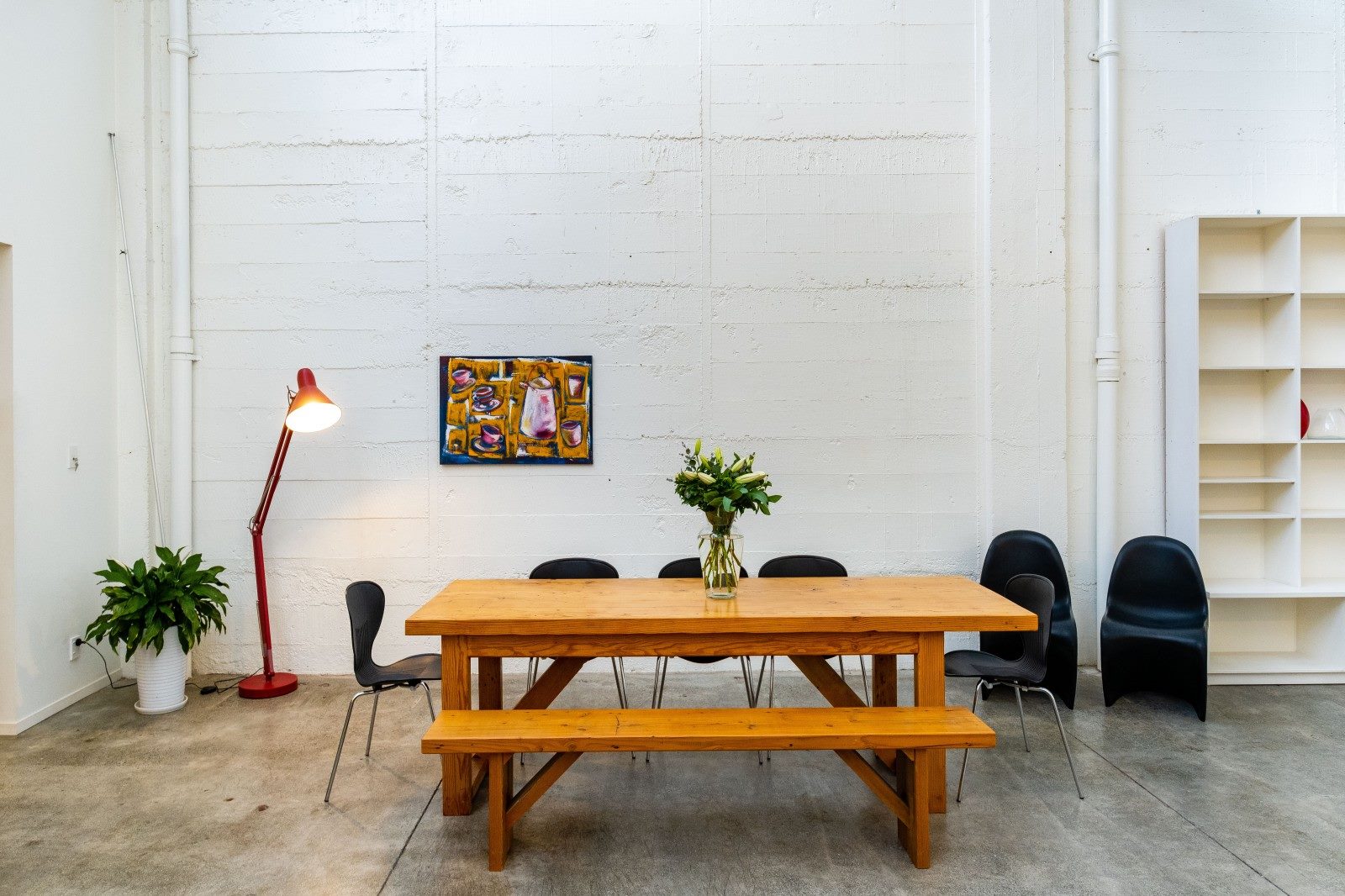Feature article
When your home is commercial and residential combined
Rather than carving out an office at home, how about creating a home out of former commercial space?
Many of us have spent the last year trying to carve out an office space for ourselves at home for when a sudden lockdown is enforced, or because we’re generally working from home more. But what if your home was offices or warehouse in the first place and your challenge was to turn it into a home space?
As companies reduce their office footprint as more staff work from home, converting offices into combined residential, home office space is definitely an option, says Colliers national director of residential project marketing, Pete Evans.
This mashup works well with smaller buildings where the whole building can be converted, he says. He’s also seeing new developments including commercial components for those wanting to run their businesses from home. Some of these spaces might have separate entry, all these things are possible, he says.
The Colliers’ director has also seen examples of retail on the ground floor with residential above but that will mainly only work in good central locations like Ponsonby, he says.
Home and office living in renovated buildings
Older commercial spaces, like well built warehouses, can lend themselves well to residential living.It can just take a little imagination and the eye of an architect or interior designer.
Jacqui Taylor from NZ Sotheby’s International Realty in Napier is selling a three bedroom two bathroom townhouse which has an option for a commercial home business at the old woolstore building in Napier’s Ahuriri. It’s one of five townhouses in there and they’re all mixed use, she says. You can’t do retail but you can use it as both offices and living space. In this 360 sq m home, two of the three bedrooms on are on a mezzanine floor.
The people selling brought their family up there and the vendor ran her marketing business from there, says Jacqui. The saw-tooth roof, paned windows and sturdy blockwork make for a bohemian space and will suit those not looking for a conventional home.
She’s been very impressed with what owner occupiers have done in the townhouses to give them a homely and bohemian feel.
With the help of an architect, these former industrial spaces can be made into very attractive homes with intimate living spaces.
How to live and work in the same space
At a neighbouring apartment at the Ahuriri woolstore, architectural designer, Don Pitt has converted his property into a combined work and living space, a place where his three staff come to work each day and where he sees clients.
“It’s nice, it allows me to reinvent myself as well as the business, and to focus on how I want to work for the next 10 years. Sitting behind desks has gone out the window, when clients come in they sit on the couch, it’s close and intimate,” he says.
Don uses box shelving with pot plants and magazines as screens, to give a physical barrier between the work space and his living, dining kitchen area.
“You couldn’t do it if you were an orthodontist or an orthopedic surgeon – but my industry doesn’t need the same level of privacy or secrecy,” he says.
“You’re reinventing how you live and work, it becomes an amalgam of the two. It works because there’s a very strong personal relationship between the principal and clients.”
He enjoys the space. “It’s got concrete walls, exposed rafters like an old warehouse, it’s a very New York loft feel.”
Don has his main bedroom upstairs and a second living area for when he just wants to withdraw and have some privacy.
It’s important that he has somewhere to escape to, he says. He’s also got the beach just up the road.
His staff leave around five, and he gets the place back to himself. He goes upstairs, changes into casual garb, and he might send a few last emails but he’s in down tools mode.
In Spain, the architectural designer has seen working and living spaces in close confines. In Seville, on the ground floor of buildings you can see accountants, designers, and jewellers working during the day and they live in the apartments above at night, it’s commonplace, he says.
What can offices turned homes look like?
Combined commercial residential properties can have many different looks. In Auckland’s Kingsland, at 493 New North Road a charming multi-use villa is for sale. The current owner has had a fabric shop upstairs over 132 sq m of space and then lived in a generous one bedroom apartment downstairs over 132 sq m.
493 New North Road, Kingsland
The property’s agent, Bayleys’ Damien Bullick, who specialises in commercial sales, says some people are looking at using the villa purely commercially, while others are envisaging an office upstairs and living down stairs.
The property’s had very good interest, he says. Cute villas, whether they’re mixed use or residential, tend to get good interest. Damien sees good potential for converted offices to homes maintaining an office element, in inner city areas like Kingsland, Eden Tce, Grey Lynn and Ponsonby.
More modern versions of these retail/ home office combinations can be seen in new developments like Vinegar Lane in Ponsonby, where residential buildings will often have retail or commercial on the lower levels.
When an apartment has a home office in mind from the start
Emma Duncan from Anne Duncan Real Estate is marketing a Grey Lynn apartment with a commercial component and in this case the commercial space can only be used by the owner for their own business, says Duncan.
Most people viewing the home, built in 2017, are seeing the space as a bonus for them, she says.
“It has an amazing outlook if you want to work from home but still has the hustle and bustle going on outside.”
The down low on the finances
Something to be aware of when buying this kind of property is, if your lender sees your property as a commercial space, then you’ll be looking at needing a commercial loan rather than a residential one. Commercial and residential mortgage advisor, Ryan Nel, managing director at The Lending Pad, says whether it’s a commercial loan or a residential loan depends on if you’re reliant on the income from the commercial space and how the property is zoned.
If it’s essentially a home office then it comes down to how the property is zoned. If the property is zoned as commercial then the loan will be commercial, even if some of the space is being used for residential.
If it is zoned residential and you’re, for instance, a self-employed plumber, who will be using the space partly for your business, and you can service the mortgage on your income, then it will be a residential loan.
“The big difference here is you’re not relying on an income but it’s an expense that you can claim back,” says Ryan. As soon as you’re reliant on a rental income and it’s commercial use, then it’s commercial even if the property is multi-zoned.
And if it’s a commercial loan then you’ll need to pay a bigger deposit than for residential, probably around 40%, he says.
The Lending Pad mortgage advisor says he has a lot of clients looking to buy residential properties with commercial downstairs as clients are often looking for properties with multiple revenue streams.
If you’re looking at buying a mixed use home, speak to your mortgage advisor and your accountant early on, he says. Every bank will look at it differently with different lending criteria, especially if the commercial property is being purchased as an investment property.
“If you’re going to be using the commercial space as a rental and you’re not using it for your company, banks are probably going to want a bigger deposit. It’s also harder to sell the banks on commercial lending because of COVID as companies are downsizing and it’s becoming increasingly difficult to lease out commercial space.
Though this can depend sector by sector. “If you put a cafe in that’s much harder to sell than construction or manufacturing, which is more guaranteed to carry on and go on working,” says Ryan.
If you rent out the living space and the office space it can be a pretty profitable enterprise, he adds.
Search
Other articles you might like



.png)




